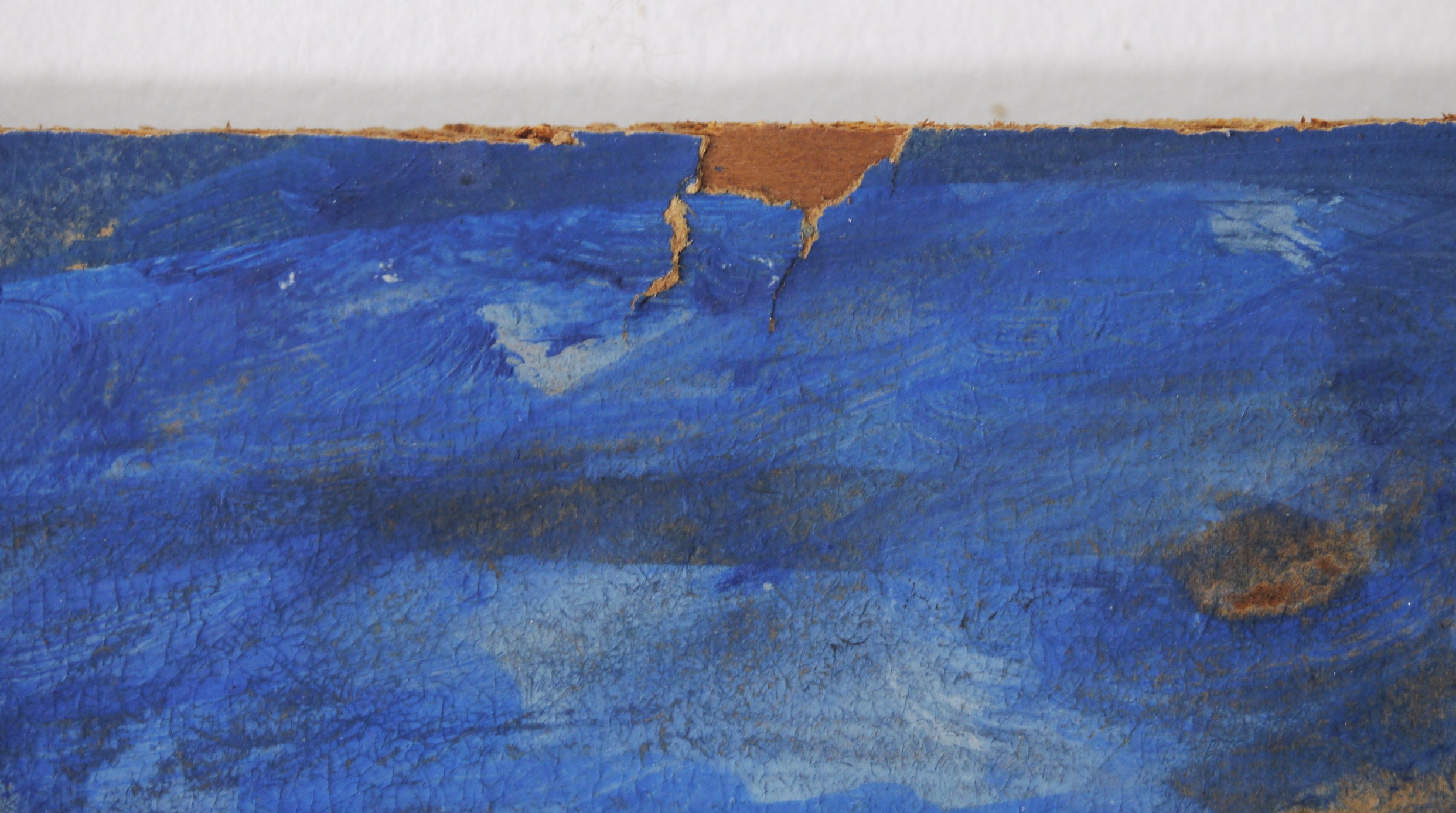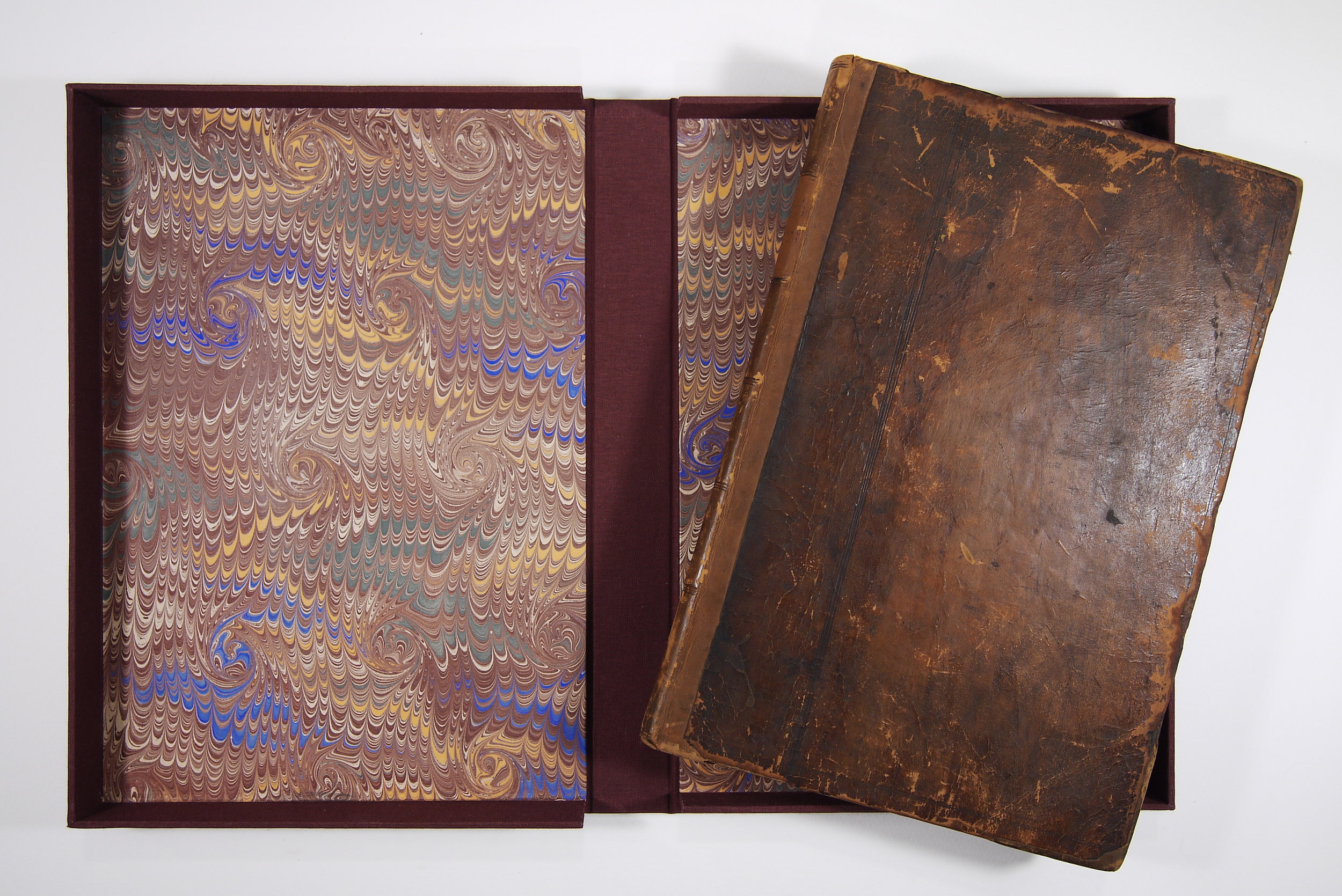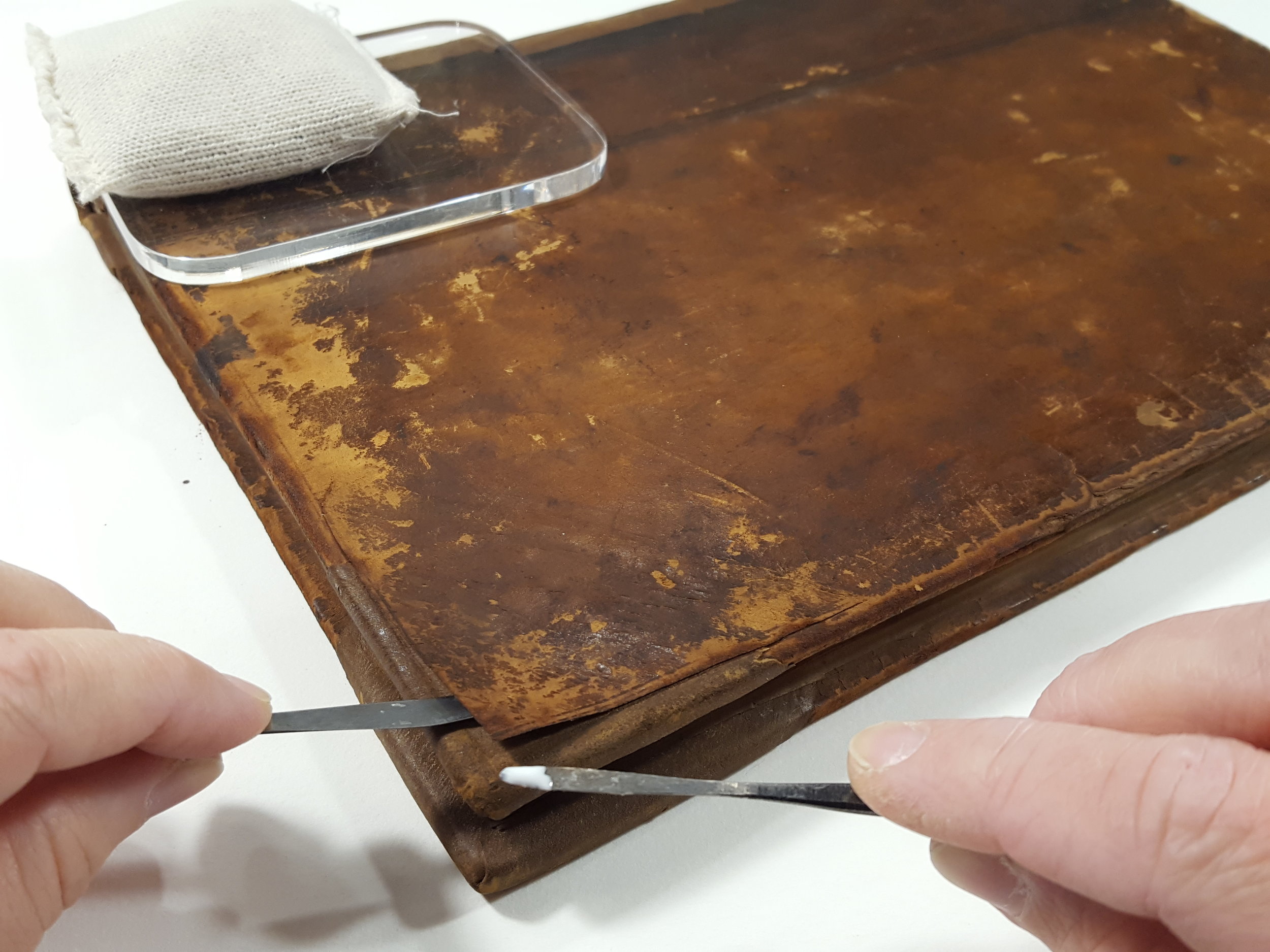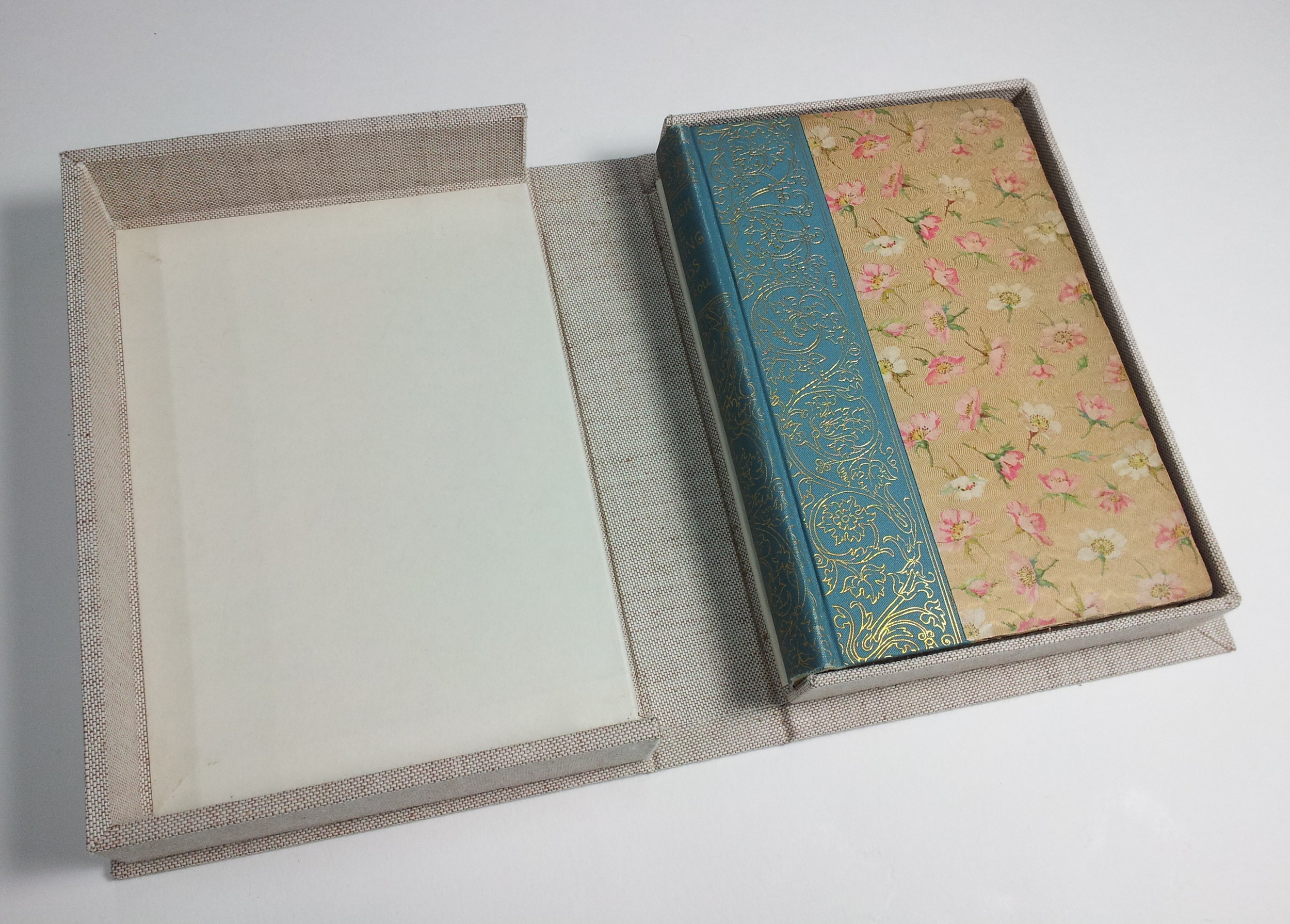Emily Carr is one of Canada's most iconic artists, and her sweeping west coast landscapes are instantly recognizable. As an artist, she was concerned with representing the nature around her, and was inspired by the indigenous peoples of the Pacific Northwest coast. Unfortunately, like many artists of her time, the materials available to her were not always of the best quality and over time many of her works have deteriorated.
Sea and Skyscape, by Emily Carr
Oil on paper, 57.5 x 87.9 (HxW)
Before Conservation Treatment
Shore Scene with Sunset, by Emily Carr Oil on paper, 39.5 x 58.3 (HxW)
Before Conservation Treatment
Book and Paper Conservation Services recently had the privilege of conserving two works on paper by Emily Carr, Sea and Skyscape and Shore Scene with Sunset. The artworks were donated to the Judith and Norman Alix Art Gallery (JNAAG) in Sarnia, Ontario, by benefactors Pamela B. and Ian W.E. Harris, and had never before been displayed to the public.
The paintings were in relatively good condition, but presented a number of stability issues and had discoloured over time due to acidic materials and framing.
Both pieces were painted by Carr in oil paint on low-grade wood-pulp paper, and had been mounted on acidic backer boards, and this had caused the papers to deteriorate and discolour severely over time. Carr's loose brushwork frequently left areas of the paper uncovered, and in these locations the paper tone shows through the paint and acts as a colour itself. Both where the paper was bare and where it showed through a thin layer of paint application, the discolouration had changed the appearance of the image dramatically from what the artist had intended.
The conservation treatment had two goals: to restore the aesthetic integrity of the works by returning the paper tones to their original intensity, and to stabilize the materials, increasing their strength and longevity.
SEA AND SKYSCAPE
Oil on paper
57.5 x 87.9 (HxW)
Sea and Skyscape was executed in oil paint on thin paper, and mounted on a plywood backer board. The acid in the paper and plywood had caused the artwork to darken significantly, with the exposed, bare areas of paper appearing almost crispy and burnt. There were chips and losses to the paper around the perimeter, and accretions of white paint had transferred from the original hand-painted wooden frame. In some areas, the paper had lifted from the board, and expansion and contraction had caused cracks to appear, which showed through the paint layer.
Oil on paper mounted on plywood.
Tears and losses to the edge of the paper.
The artwork was deemed too fragile to remove from the wooden support, but the paper required cleaning to brighten the tone and appearance of the image, and to remove acidic components in the materials. A capillary action cleaning technique was devised to "wash" the paper directly from the recto, withdrawing discolouration and leaving the paper brighter and more stable.
A cleaning spot test shows improvement in paper tone.
Dramatic improvement in the image is apparent after several rounds of cleaning.
The cleaning treatment was dramatically successful in brightening the paper, returning the areas of bare paper to a more natural "manilla" brown colour instead of dark brown, and allowing the blues in the sky to brighten nearly back to their original tones.
Sea and Skyscape by Emily Carr - detail, before and after cleaning.
Sea and Skyscape by Emily Carr - detail, before and after cleaning.
Sea and Skyscape by Emily Carr - detail, before and after cleaning.
The paint accretions around the edges were removed and losses were filled and toned to match the original. Cracks in the paper were sealed and inpainted as well. The painted wood frame, likely contemporary with the piece and possibly chosen by Carr herself, was cleaned to remove years of accumulated surface dirt.
Cracks in the paper were consolidated and inpainted to disguise loss.
Losses at the edge were filled and inpainted.
The original wooden frame was cleaned to remove accumulated dirt.
SHORE SCENE WITH SUNSET
Oil on paper
39.5 x 58.3 (HxW)
Shore Scene with Sunset was painted in oil on an acidic brown wood-pulp paper, which had yellowed with time. It was mounted loosely on a cardboard backer and had rippled severely with changes in humidity. Small tears and losses were also present around the perimeter.
Oil on paper, mounted on cardboard backer. Signature stamp is visible in lower left corner.
Raking light shows the severely rippled paper.
The first step in the conservation treatment was to remove the acidic backer board, freeing the piece from this damaging material and allowing access for washing and deacidification. The backer was removed mechanically, as was a thin loose-weave layer of fabric behind the artwork. Removal of these revealed a second stamped and inscribed signature mark on the verso.
Removing the cardboard backer.
The signature stamp revealed on verso.
After careful examination and testing to rule out any solubility issues, the painting was washed in distilled water to deacidify the paper and remove the yellow discolouration products. Significant amounts of yellow were removed with each change of the wash water, until the final rinse remained clear.
Shore Scene with Sunset in the wash.
Successive amounts of yellow discouration removed with each change of wash water.
While the paper did not brighten overall, the yellow tone of the acidic products was eliminated, and the strength and stability of the materials were improved. After washing, the painting was flattened to remove the rippling, and the tears and losses were repaired with Japanese tissue. The original wooden frame was also cleaned to remove years of accumulated grime.
Repairing the tears and losses with Japanese tissue.
Cleaning the frame to remove surface dirt.
Shore Scene with Sunset, by Emily Carr - detail, before and after conservation treatment. The yellow tinge is removed and the brown paper is back to its original tone.
The dramatic improvement in both of these artworks was very satisfying, and Book and Paper Conservation Services is pleased to know that we have contributed to extending the lifetime of these important works of Canadian art. Emily Carr is a perennial favourite among art collectors and enthusiasts; art conservators are privileged to spend time in close proximity to masterpieces such as these, and we take great pride and joy in our work.
Sea and Skyscape and Shore Scene with Sunset by Emily Carr have been returned to the Judith and Norman Alix Art Gallery (JNAAG) and are currently featured in the exhibition Heavy Hitters: The Group of 7 & Contemporaries, running from July 7 - August 6, 2017 in Sarnia, Ontario, Canada. The exhibition puts the spotlight on the gallery as a caretaker of the art pieces that are received from donors, and JNAAG has put together a display highlighting the conservation undertaken on these artworks.
Jennifer Robertson, art conservator at Book and Paper Conservation Services, will be giving a presentation at the gallery describing her work and the process of restoring the Emily Carr paintings, on Thursday, July 20, 2017, at 7 pm. If you are interested in this project, we invite you to attend!
Art Restoration: Bringing Emily Carr Back to Life
Visit our portfolio section to see more of our fine art conservation projects, or get in touch to discuss restoration of your own collection.













































